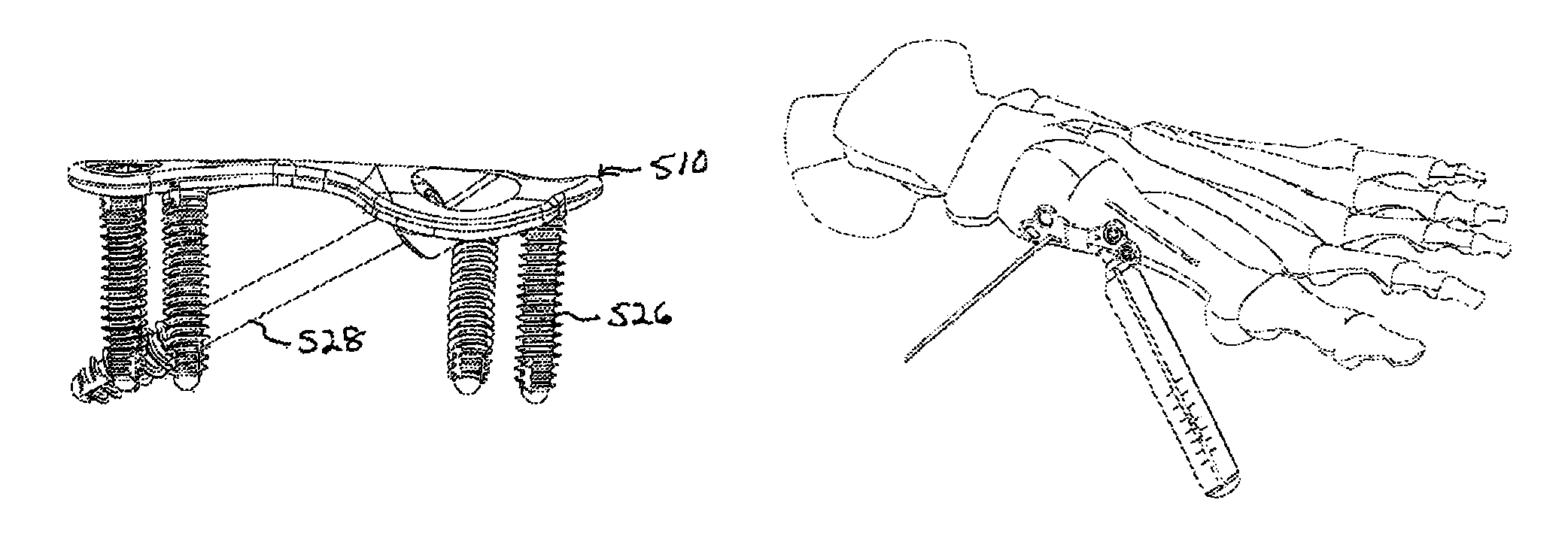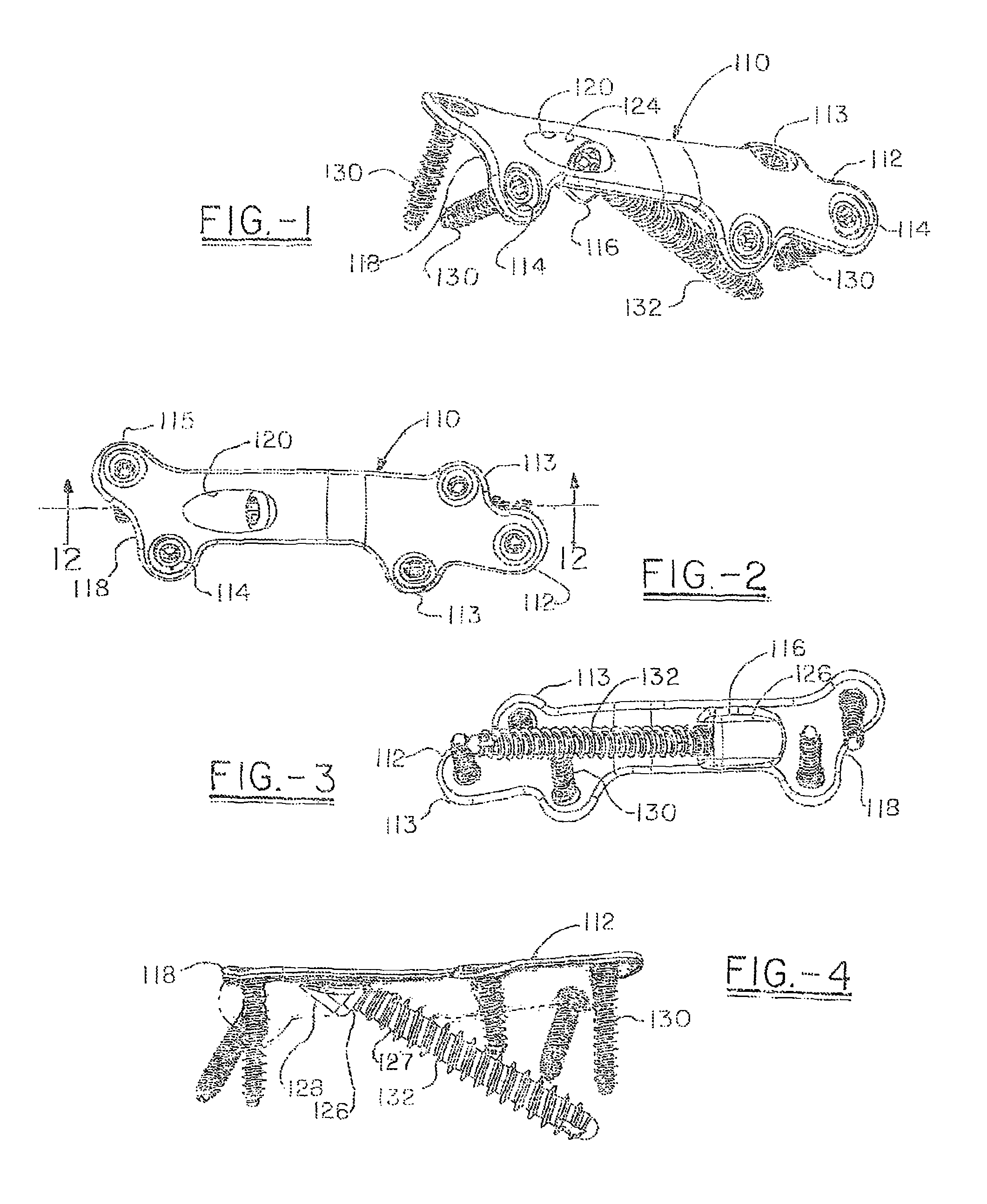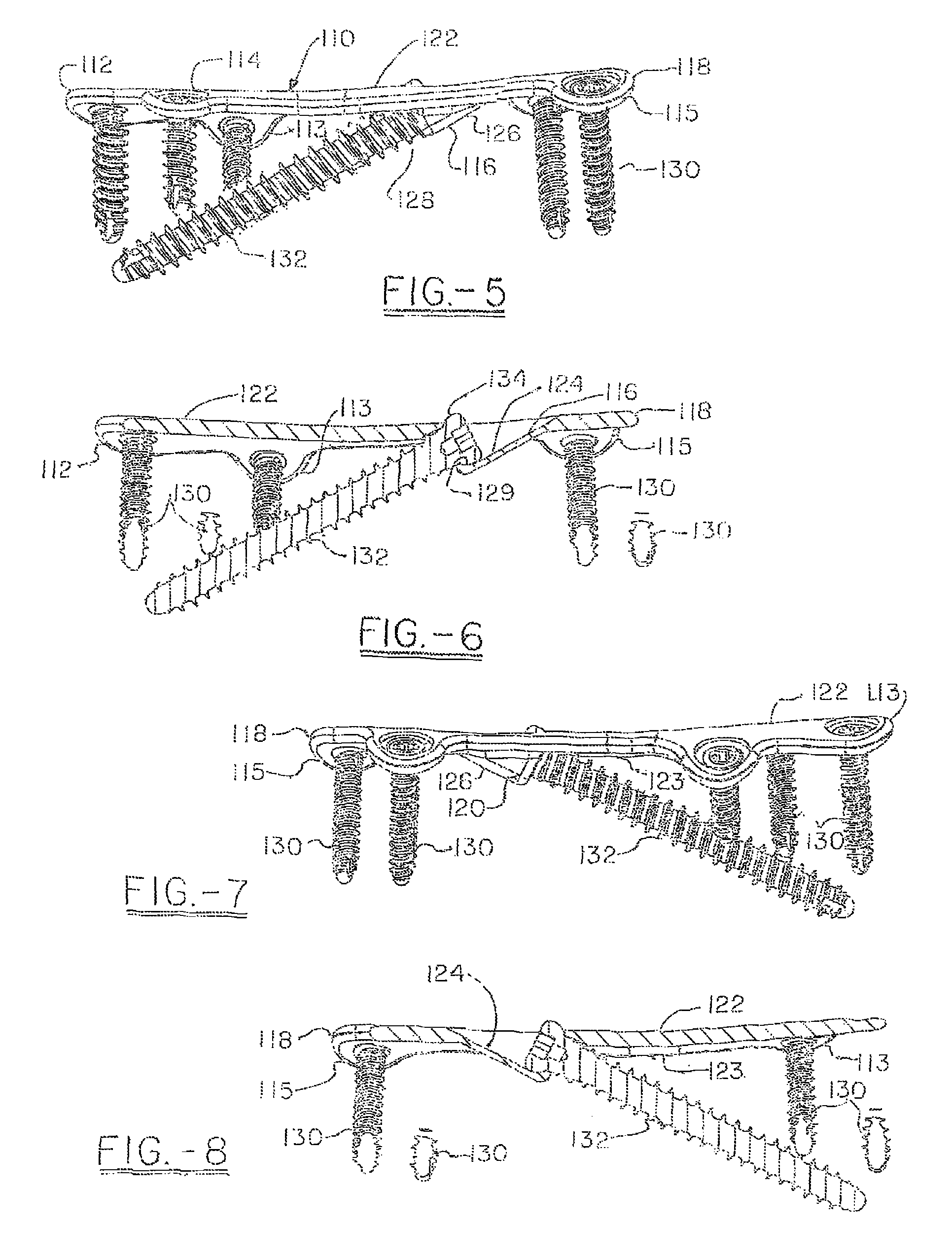Orthopedic compression plate and method of surgery
a compression plate and orthopedic technology, applied in the field of orthopedic plates, can solve the problems of severe fractures and/or dislocations, development of problems, and trauma to the midfoot, and achieve the effects of improving the outcome of events, and reducing the risk of fractures and/or dislocations
- Summary
- Abstract
- Description
- Claims
- Application Information
AI Technical Summary
Benefits of technology
Problems solved by technology
Method used
Image
Examples
second embodiment
[0053]FIGS. 11-17 illustrate a second embodiment, i.e. the MPT plate 310, of the present invention. In this version both the first and the second ends 312,318 includes three tabs 313,315 and locking holes 314 within each tab. The plate 310 continues to have the same angles for dorsiflexion and for valgus. In the first end, in which an axis can be defined along the medial axis of the plate to the mid-line, and dividing the terminal most screw hole in half, the second tab hole forms an angle of about 25° to the long axis and the screw hole has an angle of about 21°+ / −8°, preferably + / − about 5°, and most preferably about 2° to the screw axis of the terminal most hole, while the screw hole in the third tab has an angle of about 18°+ / −8°, preferably + / − about 5°, and most preferably about 2° to the screw axis of the terminal most hole, with a preferred difference of about 3°. The geometry of the opposite end of the plate mirrors the first end, with the exception that the second end furt...
third embodiment
[0054]FIGS. 18-28 illustrate the invention which is a lapidus plate and assembly designed for use in lapidus procedures. This plate 510 has a first end 512 and a second end 518, where the first end includes two tabs 515, each having internally threaded locking screw holes 514. A second end 518 has three conjoined tabs or lobes 515 two of which include internally threaded locking screw holes 514. The third lobe includes a compression housing 516 that projects into the plate so as to provide a seat for a compression screw and a structure that will also contribute to this compression in the bone. Once again, this compression housing is a peripheral compression housing that is not located on the spine or longitudinal axis of the plate, and the screw located in this housing does not act to apply a force substantially solely in the direction of the longitudinal axis or along the spine of the plate, but rather acts so as to apply a compound force that is directed in a diagonal direction ac...
PUM
 Login to View More
Login to View More Abstract
Description
Claims
Application Information
 Login to View More
Login to View More - R&D
- Intellectual Property
- Life Sciences
- Materials
- Tech Scout
- Unparalleled Data Quality
- Higher Quality Content
- 60% Fewer Hallucinations
Browse by: Latest US Patents, China's latest patents, Technical Efficacy Thesaurus, Application Domain, Technology Topic, Popular Technical Reports.
© 2025 PatSnap. All rights reserved.Legal|Privacy policy|Modern Slavery Act Transparency Statement|Sitemap|About US| Contact US: help@patsnap.com



